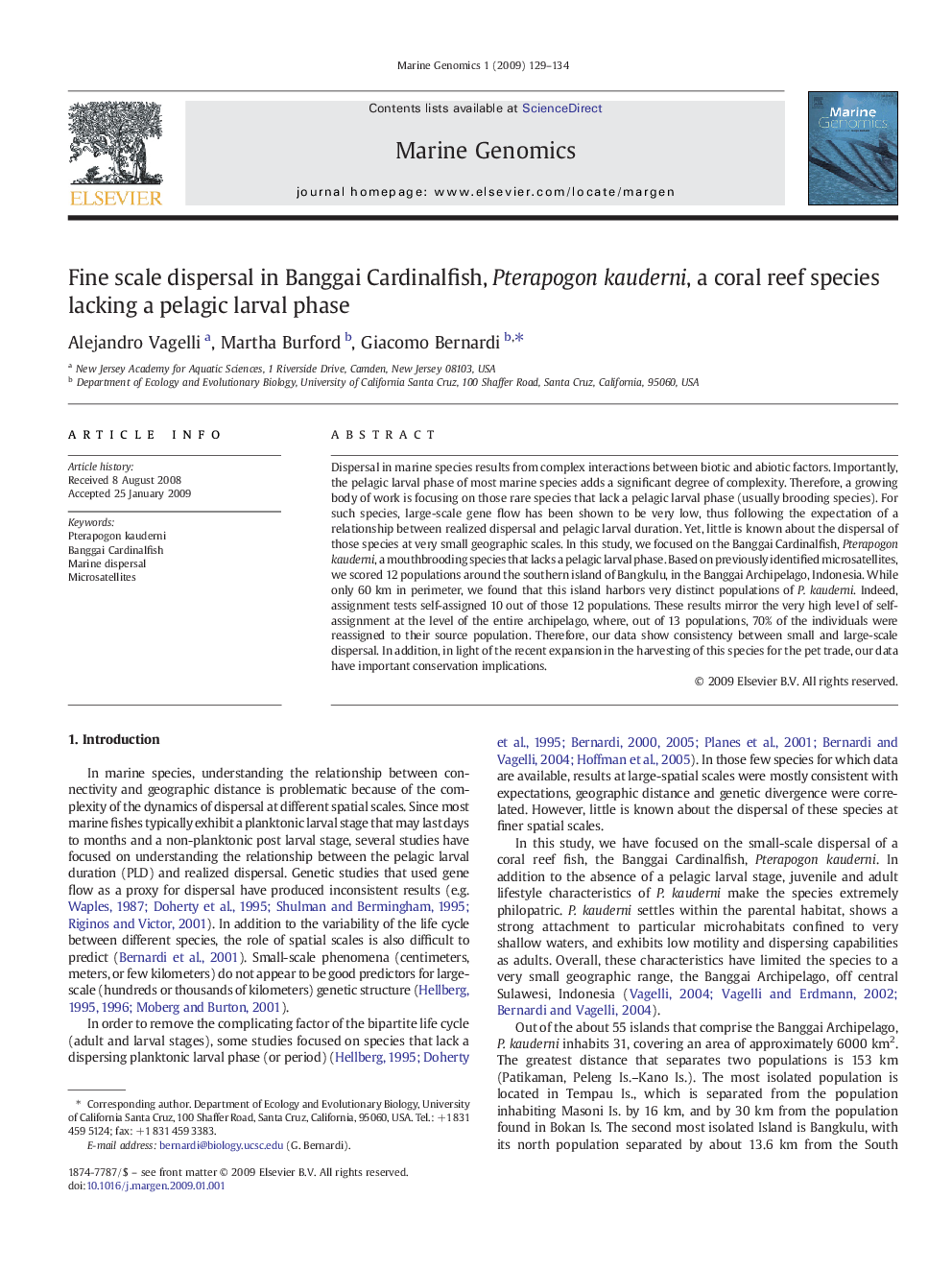| Article ID | Journal | Published Year | Pages | File Type |
|---|---|---|---|---|
| 2058353 | Marine Genomics | 2008 | 6 Pages |
Dispersal in marine species results from complex interactions between biotic and abiotic factors. Importantly, the pelagic larval phase of most marine species adds a significant degree of complexity. Therefore, a growing body of work is focusing on those rare species that lack a pelagic larval phase (usually brooding species). For such species, large-scale gene flow has been shown to be very low, thus following the expectation of a relationship between realized dispersal and pelagic larval duration. Yet, little is known about the dispersal of those species at very small geographic scales. In this study, we focused on the Banggai Cardinalfish, Pterapogon kauderni, a mouthbrooding species that lacks a pelagic larval phase. Based on previously identified microsatellites, we scored 12 populations around the southern island of Bangkulu, in the Banggai Archipelago, Indonesia. While only 60 km in perimeter, we found that this island harbors very distinct populations of P. kauderni. Indeed, assignment tests self-assigned 10 out of those 12 populations. These results mirror the very high level of self-assignment at the level of the entire archipelago, where, out of 13 populations, 70% of the individuals were reassigned to their source population. Therefore, our data show consistency between small and large-scale dispersal. In addition, in light of the recent expansion in the harvesting of this species for the pet trade, our data have important conservation implications.
